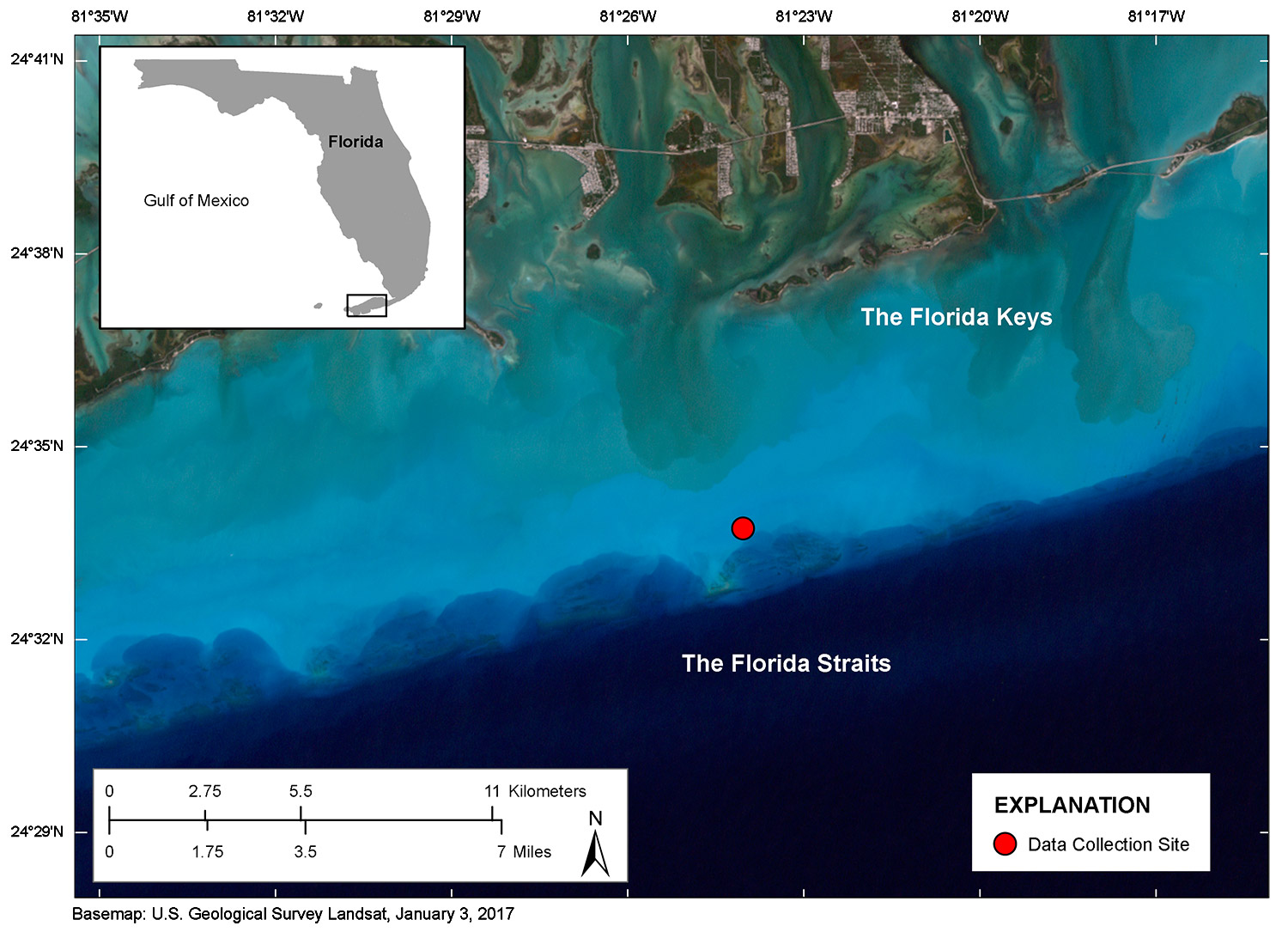In accordance with SO #3423 - The Gulf of America and SO #3424 - Mount McKinley and Landmarks Honoring the Alaskan People, new USGS data releases specific to those named places will utilize the new name Gulf of America and the restored name Mount McKinley. Per USGS practice, historical data will retain the name of the geographic features as they were known at the time the data were originally released.
Data Release
Experimental data comparing two coral grow-out methods in nursery-raised Acropora cervicornis
By Ilsa B. Kuffner,1 Erich Bartels,2 Anastasios Stathakopoulos,1 Ian C. Enochs,3,4 Graham Kolodziej,3,4 Lauren T. Toth,1 and Derek P. Manzello3
1U.S. Geological Survey, St. Petersburg Coastal & Marine Science Center, St. Petersburg, FL 33701, USA
2Mote Marine Laboratory, Tropical Research Laboratory, 24244 Overseas Hwy., Summerland Key, FL 33042, USA
3Atlantic Oceanographic and Meteorological Laboratories, NOAA, 4301 Rickenbacker Cswy., Miami, FL 33149, USA
4Cooperative Institute for Marine and Atmospheric Studies, Rosenstiel School of Marine and Atmospheric Science, University of Miami, 4600 Rickenbacker Cswy., Miami, FL 33149, USA
Summary
Staghorn coral, Acropora cervicornis, is a threatened species and the primary focus of western Atlantic reef-restoration efforts to date. As part of the USGS Coral Reef Ecosystems Studies project, we investigated skeletal characteristics of nursery-grown staghorn coral reared using two commonly used grow-out methods at Mote Tropical Research Laboratory’s offshore nursery. We compared linear extension, calcification rate, and skeletal density of nursery-raised A. cervicornis branches reared for six months either on blocks attached to substratum or hanging from monofilament line (on PVC “trees”) in the water column. We demonstrate that branches grown on the substratum had significantly higher skeletal density, measured using computerized tomography (CT), and lower linear extension rates compared to water-column fragments. Calcification rates determined with buoyant weighing were not statistically different between the two grow-out methods, but did vary among coral genotypes. Whereas skeletal density and extension rates were plastic traits that depended on environment, calcification rate was conserved. Our results show that the two rearing methods generate the same amount of calcium-carbonate skeleton but produce colonies with different skeletal characteristics, and suggest that genetically based variability in coral-calcification performance exists. The data resulting from this experiment are provided in this data release and are interpreted in Kuffner et al. (2017).
Kuffner, I.B., Bartels, E., Stathakopoulos, A., Enochs, I.C., Kolodziej, G., Toth, L.T., and Manzello, D.P., 2017, Plasticity in skeletal characteristics of nursery-raised staghorn coral, Acropora cervicornis: Coral Reefs 36: 679-684. https://doi.org/10.1007/s00338-017-1560-2
Data
| File Name and Description | Metadata (XML format) | Metadata (text format) | Download File |
|---|---|---|---|
| Staghorn_coral_skeletal_data.csv Growth and skeletal data for Acropora cervicornis corals |
Staghorn_coral_metadata.xml | Staghorn_coral_metadata.txt | Staghorn_coral_skeletal_data.zip (24 KB) |

Figure 1. Location map showing the location of the offshore nursery (24° 33.765' N 81° 24.008' W) where corals were monitored for growth. Inset shows location of the Florida Keys in relation to the state of Florida, U.S.A.
Suggested Citation
Kuffner, I. B., Bartels, E., Stathakopoulos, A., Enochs, I.C., Kolodziej, G., Toth, L.T., and Manzello, D.P., 2017, Experimental data comparing two coral grow-out methods in nursery-raised Acropora cervicornis: U.S. Geological Survey data release, https://doi.org/10.5066/F7HH6H72.
